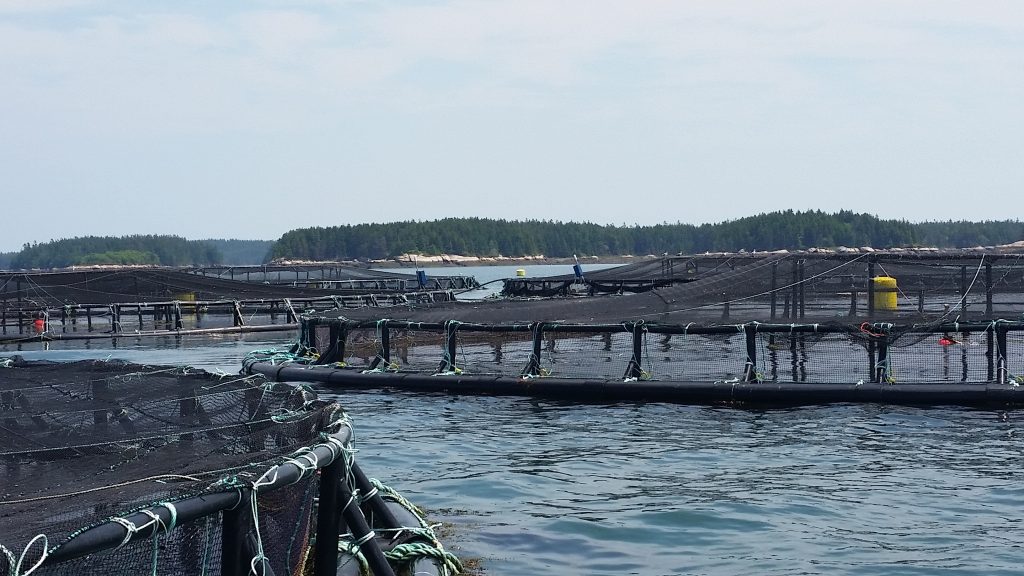By Tim Kurt, D.V.M., Ph.D., FFAR Scientific Program DirectorRecently, I had the opportunity to visit Maine and take part in a tour of aquaculture research, production and processing facilities. The tour was hosted by Sebastian Belle of the Maine Aquaculture Association and included several members of the Gulf Seafood Institute, including commercial fishermen from Louisiana and Alabama. Researchers from Southern Mississippi State University, as well as representatives from the National Oceanic and Atmospheric Administration (NOAA) and the National Aquaculture Association (NAA) also attended. The tour group spent time at the Cooke Aquaculture Atlantic salmon hatchery facilities, observed net pens by boat and visited a salmon processing plant. The tour also visited the USDA-ARS National Cold Water Marine Aquaculture Center and the Hollander & de Koning mussel processing plant.
 Offshore pens for Atlantic salmon at Cooke Aquaculture.
Offshore pens for Atlantic salmon at Cooke Aquaculture.
Aquaculture, or water-based farming, is conducted in fresh or salt water using both offshore and land-based systems. Fish have an incredible almost 1:1 feed conversion rate, meaning that they convert virtually all of their feed to protein. This results in a very low footprint from feed production for aquaculture. In the U.S., well-managed aquaculture farms really use little land or freshwater resources, produce little waste and use few (if any) antibiotics or other drugs.
In the coastal environment, the Maine experience shows that aquaculture can complement and even enhance, wild fisheries. Local fishermen in Maine have found that the artificial reef-like structures of the aqua-farms and the congregations of fish actually result in flourishing sea life around the farms. Recent advances, including feeds that use plant-materials supplemented with taurine or byproducts from fish processing, enable the production of fish with little impact on wild fisheries.
In addition to producing locally-sourced, sustainable seafood, aquaculture may allow future generations to continue earning a living on the water. Commercial fisheries and aquaculture production can complement to each other and Maine’s experience shows that both industries contribute to sustainable fish, shellfish and seaweed production.
 Getting up close and personal with salmon at the USDA ARS National Coldwater Marine Aquaculture Center.
Getting up close and personal with salmon at the USDA ARS National Coldwater Marine Aquaculture Center.